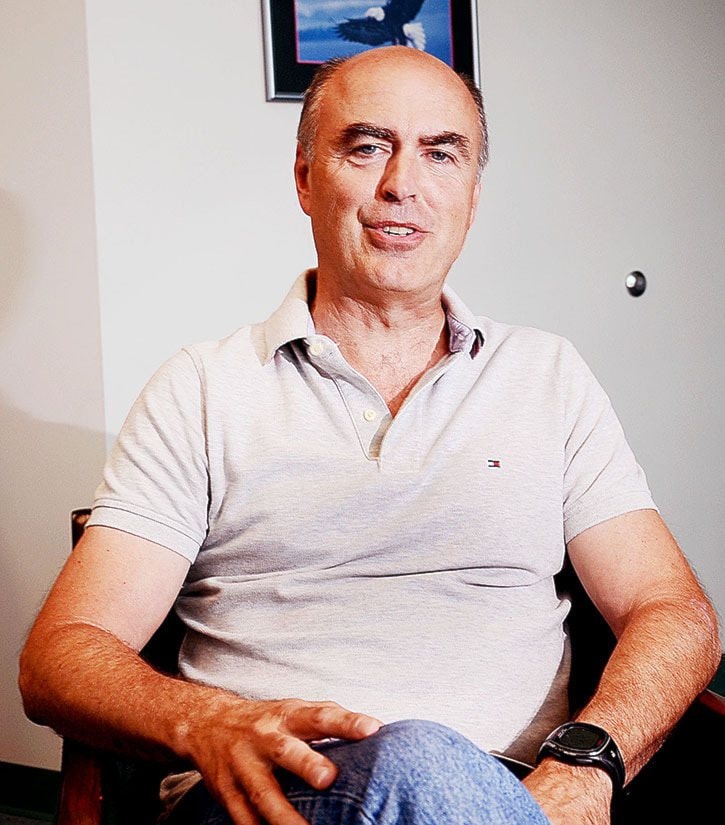The Langley School District’s acting superintendent of schools and CEO knows education – he has 27 years as an educator, including 15 years teaching, under his belt.
Gord Stewart also knows this community.
Stewart was appointed to his new position on May 1, after serving the past four years as Langley’s assistant superintendent of schools.
Peering into the not-too-distant future is the district’s desire for a new secondary school on the Willoughby Slope.
“That remains our great hope,” he said.
This new school will dramatically ease enrolment pressures in an area that Stewart says is expected to grow to the equivalent of “three to four Walnut Groves” once it’s built out.
Regarding an announcement expected sometime this month, he said, “there will be something more definitive on that with that in terms of details, in terms of what will be the contribution financially towards this project, and a timeline.”
“We’d like to try to keep it [a new secondary school] as close to the [Yorkson] middle school as possible because there’s some real nice opportunities for partnerships,” Stewart said. “Where if it could be as close to Yorkson and R.E. Mountain [Secondary] which would become a middle, we would like to keep it in that cluster.”
In June, the B.C. government announced that Langley Secondary will be seismically upgraded, and that the district has been given the go ahead by the ministry of education to begin planning for a new secondary school in the Willoughby Slope area.
The upgrade and partial replacement of LSS is a $26.2-million project with the province contributing $25.8 million, and the district contributing $426,123.
The LSS project includes demolishing just over half of the aging school and replacing it with a “modern, unified, accessible and more efficient building,” according to the province.
Construction is expected to start next summer and finish in winter 2019.
The LSS upgrade, and anticipation of a new high school in Willoughby, comes on the heels of the province estimating that roughly 529,000 full-time students will enrol in public schools across the province this year.
That’s up about 2,900 from last September.
Locally, the district is expecting roughly 250 more students this school year, which opens more teaching opportunities.
Stewart is excited about the prospect of providing employment to educators.
“Langley is a place that continues to hire and we face TOC [teacher on call] shortages,” he said. “Right now there are about 5,000 additional kids in the B.C. school system. That’s creating a number of opportunities for teachers to get jobs and I’m thrilled about that. We’re one of the stronger ones [districts] in terms of hiring right now.”
The challenge for the district, each year, is to keep its budget balanced. In 2015/16, the district had a surplus of roughly $1,374,000.
Keeping the district’s books in check is a huge priority, Stewart said: “We went through some pretty tough years where we had a deficit and trying to kind of work our way through it.”
Adding to the challenge is setting aside funds to offset the costs of construction, salary increases, and keeping up with rapidly changing technology.
“The funding doesn’t seem to keep pace with the expenses that are required,” Stewart said. “It’s still a struggle, there’s no question about it.”
Stewart also has different ideas that differs from the conventional two-month summer break for students.
“We should continue to be open-minded to the way we utilize time with kids and learning,” he said. “Just because we’ve done things a certain way for the last 100 years, does not mean we have to continue that way.”
Research demonstrates that a two-month break can be challenging for ESL students and those with learning challenges, Stewart noted.
“That is way too long to have off,” he said. “My point is, we don’t have to do it this way. You can add a week, or two to three weeks elsewhere in the calendar. The summer’s not gone. If you go to school into the middle of July or three weeks into July, you still get five to six weeks.”
Stewart said growing the district’s summer session to more than 4,000 students (20 per cent of students in Langley take summer session) shows a desire for learning locally.
“You know what? It’s three weeks. There’s lots of summer left,” he said. “That’s a way to demonstrate to our community that with personalized [learning], there’s a lot of people who are attracted to this thing.”
